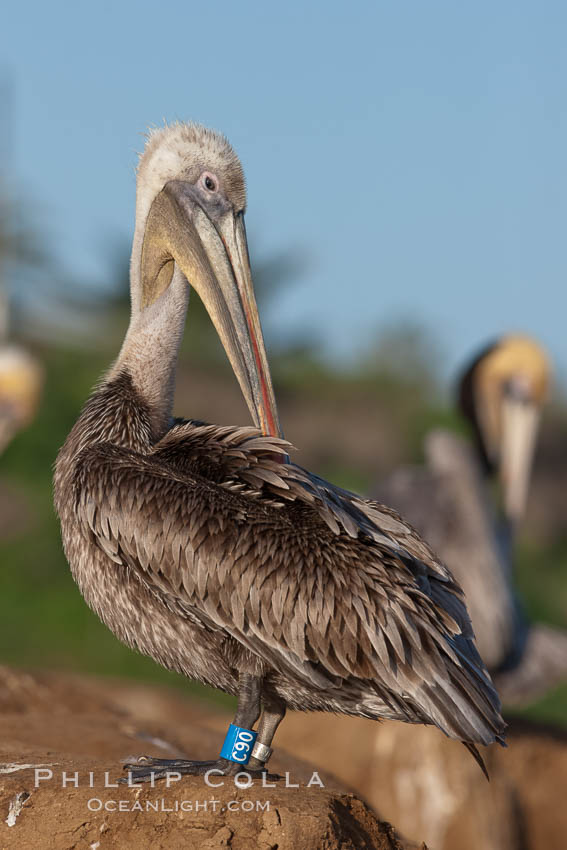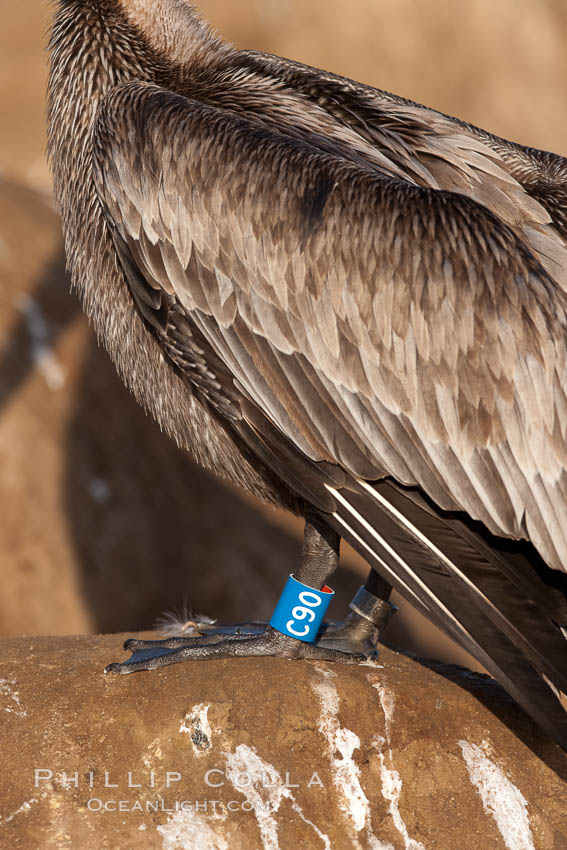Garry McCarthy forwarded this link to me today, about the distress that many California brown pelicans (Pelecanus occidentalis californicus) are in this winter: 14 recovering pelicans released along Calif. coast. It appears that this year’s El Nino phenomenon is causing fish to be deeper in the ocean than normal, making it difficult for pelicans to obtain enough food. As a consequence, many are emaciated and hypothermic. The lucky ones are receiving care at various shelters along the coast, and bear identification tags when they are released. Here is one juvenile brown pelican bearing two tags (blue and gray) that I photographed yesterday. In the background are two other pelicans, both with darker hindneck plumage indicating they are breeding adults. All three of the birds are preening.
Brown pelican, juvenile with blue and gray identification bands on its legs. This large seabird has a wingspan over 7 feet wide. The California race of the brown pelican holds endangered species status, due largely to predation in the early 1900s and to decades of poor reproduction caused by DDT poisoning
Image ID: 23630
Species: Brown Pelican, Pelecanus occidentalis, Pelecanus occidentalis californicus
Location: La Jolla, California, USA
Brown pelican, juvenile with blue and gray identification bands on its legs. This large seabird has a wingspan over 7 feet wide. The California race of the brown pelican holds endangered species status, due largely to predation in the early 1900s and to decades of poor reproduction caused by DDT poisoning
Image ID: 23631
Species: Brown Pelican, Pelecanus occidentalis, Pelecanus occidentalis californicus
Location: La Jolla, California, USA
See more animal identification tag photos, photos of animals with ID tags and a Guide to Photographing Pelicans in La Jolla.





